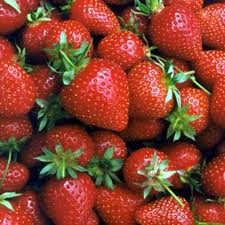All living things have DNA: the chemical instructions on how to make a living thing. It can easily be  seen with the naked eye when collected from thousands of cells. This simple method allows you to extract DNA from a strawberry and view it.
seen with the naked eye when collected from thousands of cells. This simple method allows you to extract DNA from a strawberry and view it.
Materials (per group):
* 1 Strawberry
* 1 Zip-closure sandwich bag
* Soapy water
* Meat tenderizer powder
* 1 small beaker
* 1 square of cheesecloth
* 1 Rubber band
* 1 Test tube
* 1 Pipette Dropper
* Rubbing alcohol
* Paper towels
Procedure:
- Place a strawberry in a zip-closure bag and remove most of the air before you seal the bag.
- Mash the strawberry through the bag in your hand. Do not hit against the table.
- Now, add 2 full pipettes worth of the soapy water and 1 sprinkle of meat tenderizer to your Ziploc bag.
- Continue mixing and mashing the bag in your hand for 1 minute.
- Place a piece of gauze over the opening of the beaker, securing it with a rubber band.
- Carefully pour the strawberry mixture into the beaker making sure to catch the solids with the cheesecloth gauze. The cheese cloth should filter out most of the solids from the liquid contents. Throw away the solid strawberry particles and cheesecloth.
- Pour ½ of the strawberry liquid from the beaker into the test tube.
- Next, add 1 dropper full of rubbing alcohol to the test tube. Take care not to tilt or tip the test tube; do not mix the two liquids.
- Observe the line between the strawberry liquid mixture and the rubbing alcohol.
- You will notice a white thread-like cloud appearing at this line. This is strawberry DNA. The DNA will clump together and float to the top of the alcohol layer. You can GENTLY swirl the DNA around a stir rod, BUT BE VERY CAREFUL NOT TO STIR IT WITH THE BOTTOM LAYER!!!
Follow up Questions:
Answer the questions on the back of this worksheet and staple in class notebook.
- Why do we use the dishwashing liquid and meat tenderizer at the beginning of the DNA extraction process? (Hint: think cell membranes!)
- Why did we add rubbing alcohol at the end? Explain. (HINT: Look up the words: SOLUBLE and INSOLUBLE)
